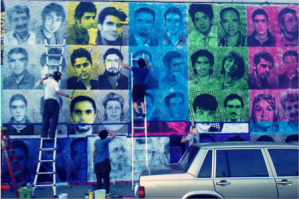Diasporic groups, that is, people who at some stage in their history migrated from an original homeland and settled in another country, according to theorist Myria Georgiou in her 2003 article ‘Mapping Diasporic Media across the EU: Addressing Cultural Exclusion’, struggle in representing diasporic groups to themselves and to the rest of the society. However, growth of new media platforms and technologies illustrates a growing potential for mobility and communication, which, according to Georgieou, leads to ‘new forms of inclusion and exclusion in transnational communities and multicultural societies’.
The emergence of new media capitals is just one aspect enabling the globalisation of culture through media. As explained by Curtin, media capitals are places where cultures come together and evolve into a new mass culture in the form of media platforms that are then broadcasted to a diverse audience, hence globalising culture through media and enabling the inclusion of diasporic groups.
This is evident in the emergence of Hong Kong TV, which was dependent on the influence of cultural institutions and creative talent from Guangzhou, a large city in Southern China, which was the centre of Cantonese entertainment until war disrupted this and caused the Guangzhou people to flee to Hong Kong. However despite the large number of refugees, Hong Kong continued to produce films with content that was not relevant to the new local diasporic community, which in turn led to the decline in interest and attendance. As a result Hong Kong saw a shift in medium to TV, which was able “to address a rapidly growing and increasingly prosperous local television audience” (Curtin, 2003). According to Curtin, TV began to emerge as a foundational feature of Hong Kong identity and society. It began to produce variety shows, featuring music stars that were creating a local music style “that merged US, Japanese and Chinese influences into a distinctive pop form featuring contemporary lyrics by local songwriters”. This genre became known as ‘cantopop’ and is still popular throughout Asia today, a prime example of diasporic media.
- Top 10 Cantopop Classics from the ’80s
- Joey Yung: Awarded “Most Popular Female Singer” and “Ultimate Best Female Singer – Gold” a record breaking eight times, thus emerging as one of the premier Cantonese singers in Hong Kong. Joey is ranked 52nd on the Forbes 2013 Chinese Celebrity List, making her the highest paid Hong Kong-based Cantopop singer with an estimated income of $29,200,000 RMB last year
References
Curtin, Michael. “Matrix Media.” Television Studies After TV: Understanding Television in the Post-Broadcast Era. Eds Graeme Turner and Jinna Tay. London: Routledge, 2009. 9–19.
Georgiou, Myria. (2003). ‘Mapping Diasporic Media across the EU: Addresing Cultural Exclusion’. Key Deliverable: The European Media and Technology in Everyday Life Network, 2000- 2003.
Moran, Albert. New Flows in Global TV. Bristol and Chicago: Intellect, 2009.

